Simplyphytoplankton - Simply Phytoplankton





More Posts from Simplyphytoplankton and Others

Recently, NASA Goddard released a visualization of aerosols in the Atlantic region. The simulation uses real data from satellite imagery taken between August and October 2017 to seed a simulation of atmospheric physics. The color scales in the visualization show concentrations of three major aerosol particles: smoke (gray), sea salt (blue), and dust (brown). One of the interesting outcomes of the simulation is a visualization of the fall Atlantic hurricane season. The high winds from hurricanes help pick up sea salt from the ocean surface and throw it high in the atmosphere, making the hurricanes visible here. Fires in the western United States provide most of the smoke aerosols, whereas dust comes mostly from the Sahara. Tiny aerosol particles serve as a major nucleation source for water droplets, affecting both cloud formation and rainfall. With simulations like these, scientists hope to better understand how aerosols move in the atmosphere and how they affect our weather. (Image credit: NASA Goddard Research Center, source; submitted by Paul vdB)

- Shadows of the ocean.🐋 Photo: @itookthisphotograph #oceanfilmtour #oceanlovers #underwaterphoto #whale #oceanlife #marinelife #ocean




Dinoflagellates! These bizarre microorganisms are found all over the ocean, and occasionally freshwater lakes and ponds. Some are photosynthetic, some are predators, some are both! They are also the plankton responsible for toxic red tides.
The first two pictures show Pyrocystis dinoflagellates. These are closely related to the dinoflagellates that bioluminesce a bright blue along coastal waters. In the top picture, you can see a cell dividing its nucleus into two, as well as some sort of protective cyst in the lower right corner.
The 3rd picture is a bloom of Gymnodinium dinoflagellates, and the last picture is a close-up. See the nucleus?
More neat facts: some dinoflagellates have 215 billion base pairs in their genome. For comparison, the human genome is made up of about 3 billion base pairs! No one really knows why they have so much DNA, most of which is heavily modified and wrapped with re-purposed virus proteins.
A mariachi band playing at my host dad’s mom’s 86th birthday party.

natgeo Photograph by @thomaspeschak This is a marine iguana, but I think they should be called ‘Ocean Godzilla’ instead. These are our planet’s only lizards that feed in the ocean and despite their fierce, dragon like appearance they are very sensitive to climate change. They rely exclusively on cold water seaweeds for nourishment which die off quickly as the water becomes too warm. For more “Ocean Godzilla” pics follow @thomaspeschak
Showing off those glide and pivot skills 😶🌫️
Fishes in the family Macrouridae, also known as rattails, can glimpse even the faintest flickers of bioluminescence—the “living light” produced by deep-sea animals. Their keen eyesight reveals prey, like fishes and squid, darting in the waters above the seafloor. A rattail relies on other senses, like smell and touch, to find a meal too. It has a nose for rotting carrion, and sensitive barbels on its chin detect small crustaceans or worms wiggling in the mud below.
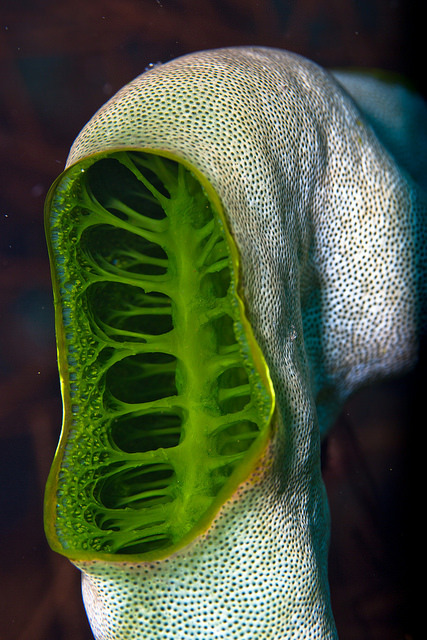

IMG_2667 by scott1e2310 on Flickr.
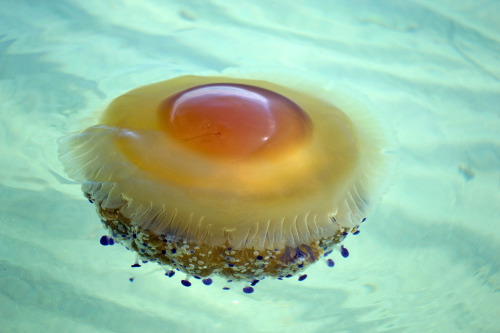

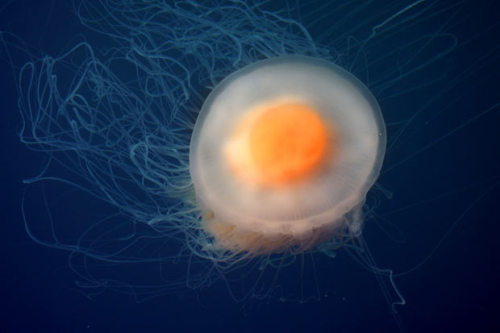
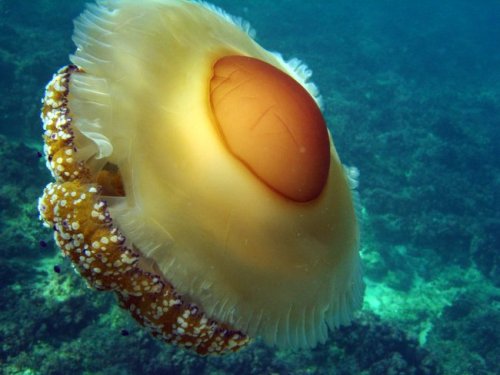
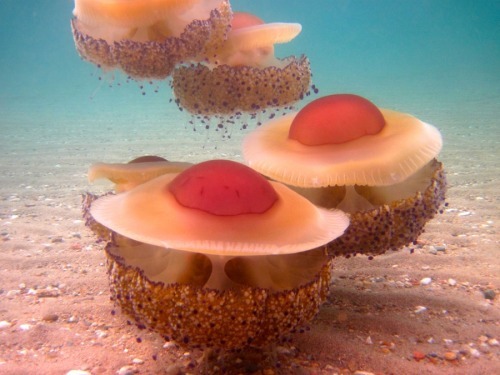
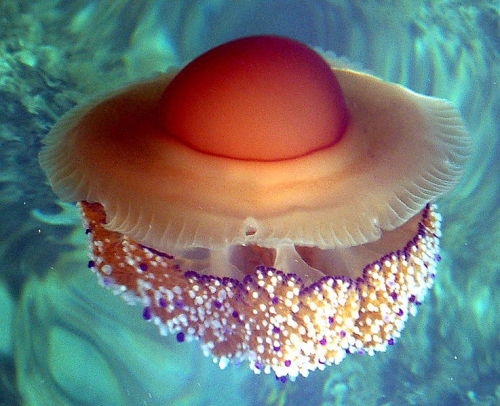
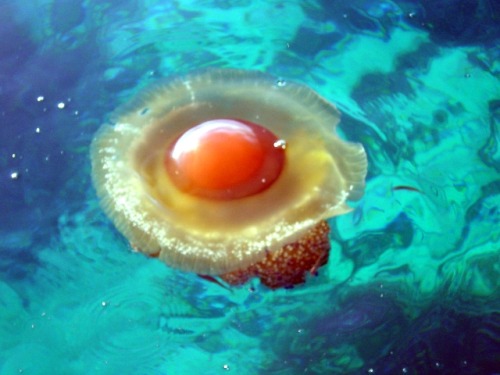
Fried Egg Jellyfish Are Kind of Adorable – & That’s No Yolk.
There are two species that hold the whimsical title of “Fried Egg Jellyfish”: Phacellophora camtschatica and Cotylorhiza tuberculata though the two are quite different from each other in all aspects beside appearance.
Phacellophora camtschatica is a huge jelly that prefers colder waters. It’s bell can reach up to 2 ft across and its dozens of tentacles reach over 20 ft long! If you don’t think this floating egg creature looks very menacing, you’d be right. It has a very weak sting and many small crustaceans take advantage of the jelly by riding on its bell (breakfast to go…?) while snatching up extra food.
Cotylorhiza tuberculata is a much smaller jellyfish that hangs out in warmer waters. It only reaches about 35 cm in diameter, so don’t go for this Fried Egg Jelly if you want a big breakfast. Unlike most jellyfish, C. tuberculata can swim on its own, without relying on the currents for movement. It’s sting (if you can even call it that) is so feeble that it has very little to no effect on humans at all. I mean, it does look like a breakfast food, after all… how powerful could it be?
-
 escapism88 reblogged this · 5 years ago
escapism88 reblogged this · 5 years ago -
 dark--fleet reblogged this · 5 years ago
dark--fleet reblogged this · 5 years ago -
 lilacprincessofrecovery liked this · 6 years ago
lilacprincessofrecovery liked this · 6 years ago -
 getsmashed liked this · 6 years ago
getsmashed liked this · 6 years ago -
 immyownqueenwatchhowirule liked this · 6 years ago
immyownqueenwatchhowirule liked this · 6 years ago -
 ferociousfangirlofmanyfandoms liked this · 6 years ago
ferociousfangirlofmanyfandoms liked this · 6 years ago -
 aliens-vl reblogged this · 6 years ago
aliens-vl reblogged this · 6 years ago -
 erinth3vil liked this · 6 years ago
erinth3vil liked this · 6 years ago -
 babajana liked this · 6 years ago
babajana liked this · 6 years ago -
 branmaceff liked this · 6 years ago
branmaceff liked this · 6 years ago -
 sakasu-nsfw reblogged this · 6 years ago
sakasu-nsfw reblogged this · 6 years ago -
 chumanzky reblogged this · 6 years ago
chumanzky reblogged this · 6 years ago -
 chumanzky liked this · 6 years ago
chumanzky liked this · 6 years ago -
 introverted-maniac liked this · 6 years ago
introverted-maniac liked this · 6 years ago -
 livelybeingg reblogged this · 6 years ago
livelybeingg reblogged this · 6 years ago -
 yagirlisouthere liked this · 7 years ago
yagirlisouthere liked this · 7 years ago -
 the-d-in-agustd liked this · 7 years ago
the-d-in-agustd liked this · 7 years ago -
 pancakesrblue liked this · 7 years ago
pancakesrblue liked this · 7 years ago -
 sexosoincorregible liked this · 7 years ago
sexosoincorregible liked this · 7 years ago -
 micabell liked this · 7 years ago
micabell liked this · 7 years ago -
 sunkentowers reblogged this · 7 years ago
sunkentowers reblogged this · 7 years ago -
 globalissuesandawareness reblogged this · 7 years ago
globalissuesandawareness reblogged this · 7 years ago -
 thenerdyanthrohistorian reblogged this · 7 years ago
thenerdyanthrohistorian reblogged this · 7 years ago -
 sydneyoperaplates-blog liked this · 7 years ago
sydneyoperaplates-blog liked this · 7 years ago -
 chunghagodess liked this · 7 years ago
chunghagodess liked this · 7 years ago -
 samsam24 liked this · 7 years ago
samsam24 liked this · 7 years ago -
 motherboardkitten reblogged this · 7 years ago
motherboardkitten reblogged this · 7 years ago -
 kinyong-blog1 liked this · 7 years ago
kinyong-blog1 liked this · 7 years ago -
 effyeahevolution reblogged this · 7 years ago
effyeahevolution reblogged this · 7 years ago -
 wazaba liked this · 7 years ago
wazaba liked this · 7 years ago -
 cccrrrfu reblogged this · 7 years ago
cccrrrfu reblogged this · 7 years ago -
 merciresolution reblogged this · 7 years ago
merciresolution reblogged this · 7 years ago -
 theycallmebecca reblogged this · 7 years ago
theycallmebecca reblogged this · 7 years ago -
 manuelalbino-blog liked this · 7 years ago
manuelalbino-blog liked this · 7 years ago -
 mistress-of-the-phantom-isle reblogged this · 7 years ago
mistress-of-the-phantom-isle reblogged this · 7 years ago -
 summeroceandays reblogged this · 7 years ago
summeroceandays reblogged this · 7 years ago -
 marwamarwa liked this · 7 years ago
marwamarwa liked this · 7 years ago -
 kiebs reblogged this · 7 years ago
kiebs reblogged this · 7 years ago

Blog dedicted to phytoplankton. Phytoplankton are microscopic organisms that are responsible for half of the photosynthesis that occurs on Earth. Oh, and they look like art... Follow to learn more about these amazing litter critters! Caution: Will share other ocean science posts!Run by an oceanographer and phytoplankton expert. Currently a postdoctoral researcher.Profile image: False Colored SEM image of Emiliania huxleyi, a coccolithophore, and the subject of my doctoral work. Credit: Steve Gschmeissner/ Science Photo Library/ Getty ImagesHeader image: Satellite image of a phytoplankton bloom off the Alaskan Coast, in the Chukchi SeaCredit: NASA image by Norman Kuring/NASA's Ocean Color Web https://earthobservatory.nasa.gov/images/92412/churning-in-the-chukchi-sea
158 posts